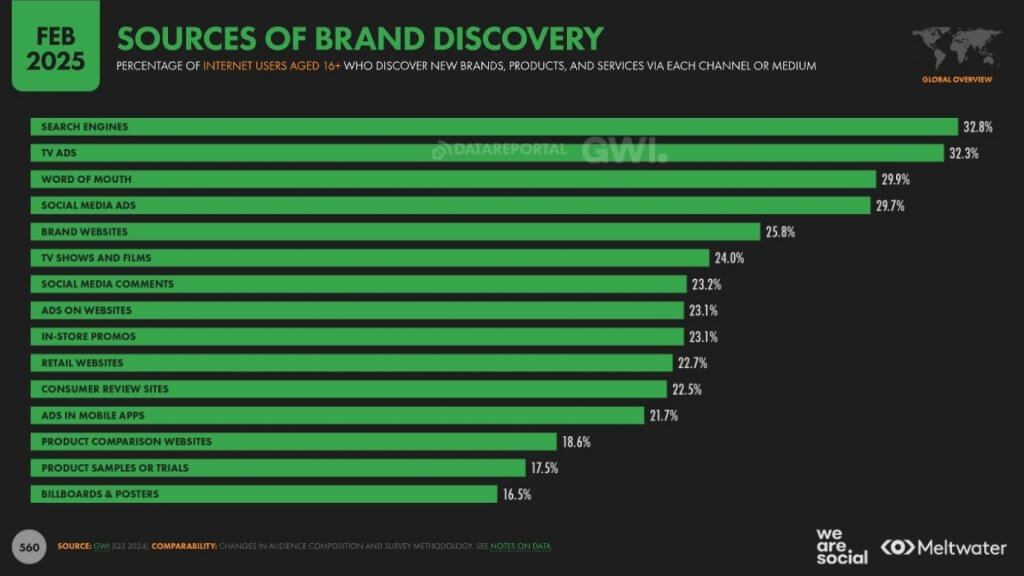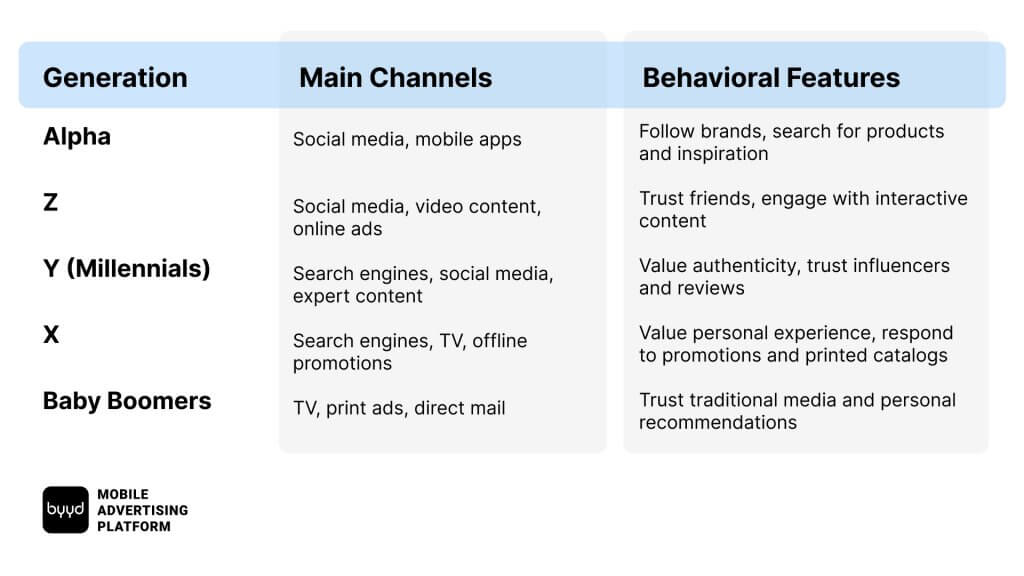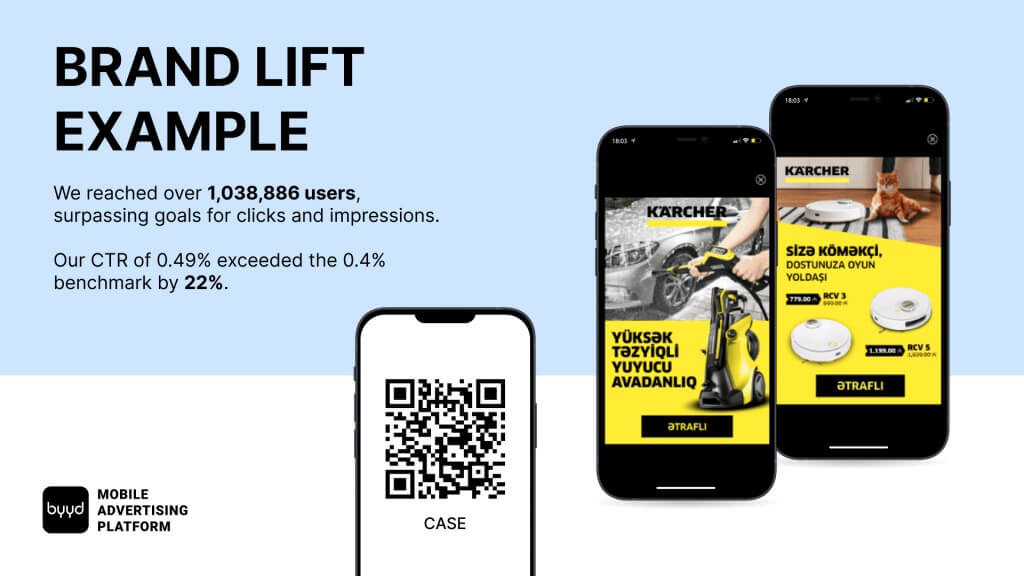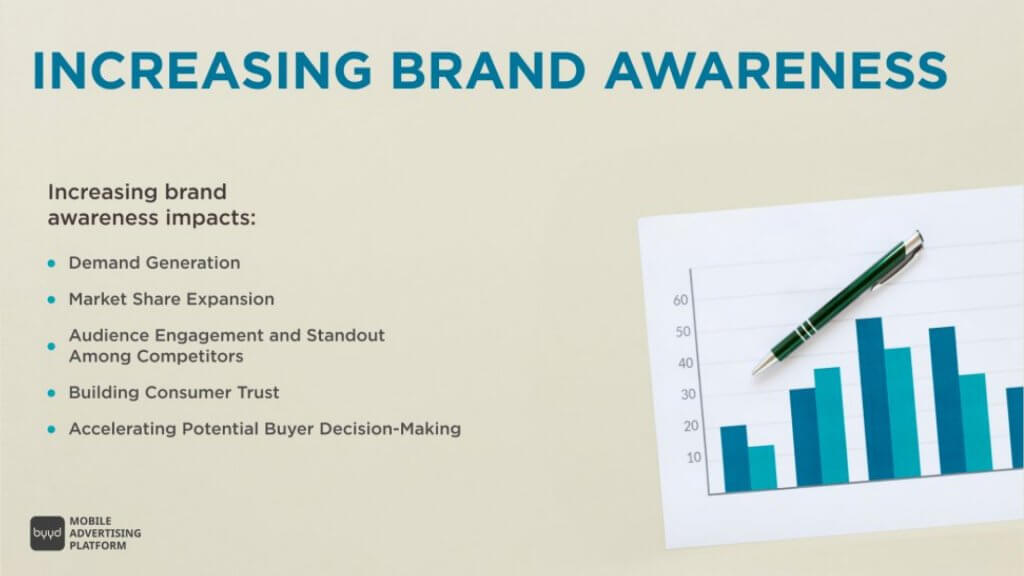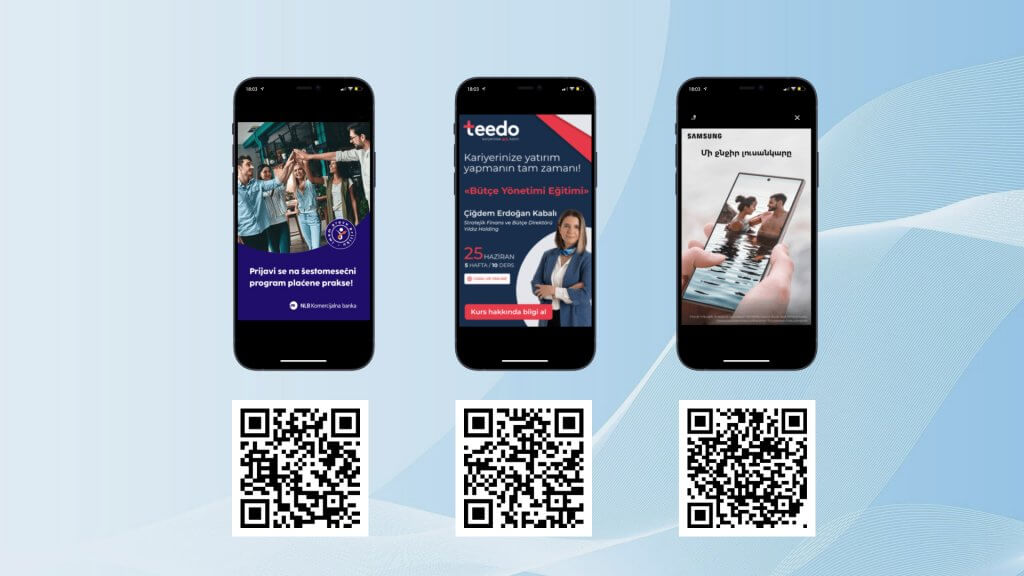Brand Discovery: How Consumers Find and Explore New Brands in 2025
In 2025, brand discovery takes place through a range of digital channels, with the choice influenced by factors like age, interests, and location.
In this article, we’ll explore the most popular channels of brand discovery for different generations and explain what brand awareness is, how to measure it, and how to increase it.
How do consumers find brands and products in 2025?
According to the latest Digital 2025 data, there are several key channels through which users discover brands.
Here are the main ones:
- Search engines (32.8%)
The leading source for discovering new brands. Effective SEO and paid search ads ensure high visibility and attract organic traffic.
- TV advertising (32.3%)
Despite the dominance of digital channels, TV remains a powerful tool for reaching a wide audience and building brand awareness.
- Social media ads (29.7%)
One of the most dynamic channels. Precise targeting, native content, and creative formats help quickly attract and retain users’ attention.
- In-app ads (21.7%)
Given how much time users spend in apps, in-app advertising becomes an effective way to capture attention at the right moment and context.
Brand Discovery Across Generations
It’s clear that different generations rely on different channels to discover brands. According to GWI data, in 2025, the choice of channel depends on a person’s age, interests, and digital habits.
- Generation Alpha
Social media is the main source of brand discovery among Generation Alpha. They use it to follow their favorite brands, search for products, and find inspiration.
Learn more about how to win Generation Alpha’s loyalty here.
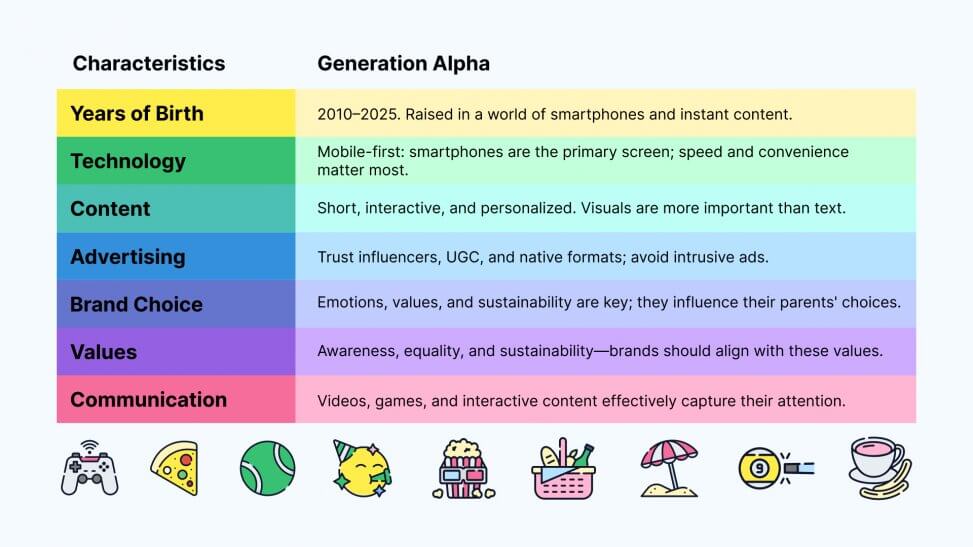
- Generation Z
Zoomers discover brands through social media, video content, and online advertising. They are especially engaged with interactive content such as in-game ads, vlogs, and virtual environments.
- Generation Y (Millennials)
Millennials rely on search engines, social media, and expert content. They value brand authenticity and trust influencer recommendations, and reviews.
- Generation X
This group actively uses both online and offline channels. They mainly discover brands through search engines and TV ads but also appreciate personal experiences.
- Baby Boomers
This audience tends to trust traditional channels like TV, print ads, and direct mail. Recommendations from friends and personal experiences play a significant role in their purchasing decisions.
What Is Brand Awareness?
We’ve explored how consumers from different generations discover brands and products in 2025. Despite the variety of methods, they all aim for one goal — increasing brand awareness.
Brand awareness is when people are familiar with a company’s existence and can distinguish it from its competitors.
It’s a key starting point in the customer’s journey to purchase. The more a person knows about a brand, its values, and its products, the higher the likelihood they will choose it.
There are two types of brand awareness:
- Unaided (Spontaneous) Awareness — when a customer recalls a brand or product name without any prompts.
For example, if asked to name phone brands, someone might say: iPhone, Samsung, Xiaomi. In this case, iPhone is the top-of-mind brand — the first that comes to mind.
- Aided Awareness — when a customer recognizes a brand only after being shown several names or logos.
This indicates how noticeable and recognizable a brand is in a competitive environment.
How to Measure Brand Awareness
As mentioned earlier, brand awareness is the starting point on the path to consistent sales. However, like any behavioral metric, it can and should be measured.
There are many methods available. Here are some of the most effective ones:
- Search Traffic Analysis
This shows how many people are searching for your brand in search engines. If branded search queries are increasing, it indicates that brand awareness is growing.
Tools like Google Trends and Google Analytics are great for analyzing search traffic.
- Online Mentions Monitoring
This helps you understand how often and where your brand is mentioned — whether in social media, blogs, or news outlets.
Services like Brand24, Mention, and Hootsuite are commonly used for tracking brand mentions.
- Surveys and Questionnaires
Surveys and questionnaires provide direct feedback from consumers about their experiences with your brand. These can be conducted independently or through specialized platforms.
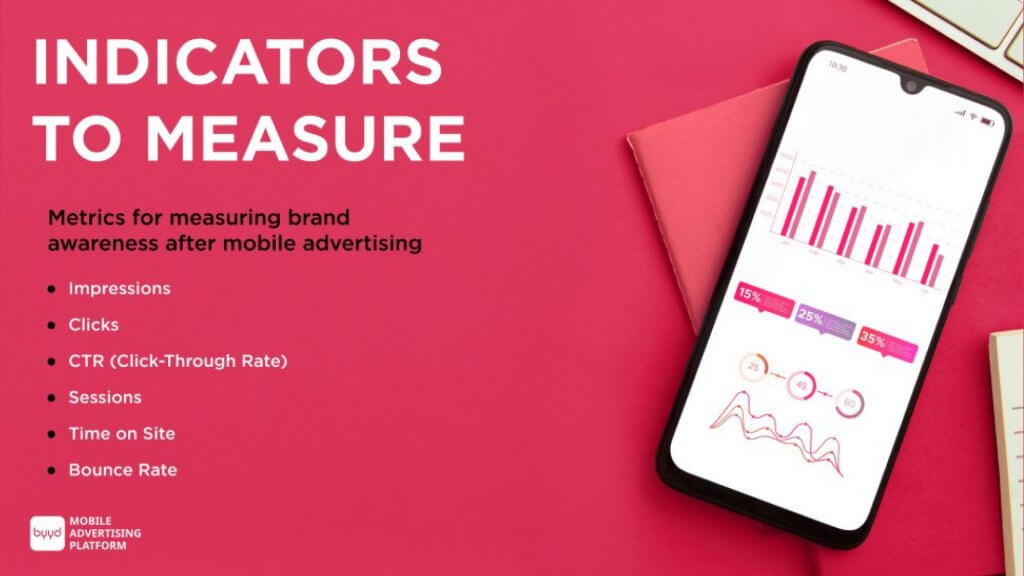
- Direct Traffic Analysis
This helps determine how many users visit your website directly, without clicking on ads or external links. The more direct visits you have, the higher your brand awareness.
- Brand Lift Studies
These surveys help measure how advertising impacts brand awareness. They are conducted through platforms like Google and others to find out if people remember the brand after seeing an ad.
We at BYYD also often use Brand Lift studies to assess how brand awareness has changed after a mobile campaign.
Karcher Case Study
After the mobile campaign, we set out to measure the impact on Karcher’s brand awareness among mobile users.
To achieve this, we conducted a two-phase Brand Lift Study:
- Phase One: We surveyed users who had not seen the ads to determine the baseline level of brand awareness. To ensure data accuracy, the Device IDs of users who had been exposed to the ad creatives were excluded from the sample.
- Phase Two: We surveyed users who had seen the ads during the campaign, excluding the Device IDs of participants from the first phase to avoid overlap.
In both phases, respondents were asked the question: “Are you familiar with the brand?”
Organic brand awareness for Karcher was:
- At the first stage: 42%
- At the second stage: 47%
Thus, after the mobile campaign, brand awareness increased by 11.9% compared to the initial level.
How to Boost Brand Awareness – Insights from BYYD
In 2025, omnichannel marketing is a key driver of brand awareness. To maximize audience reach, it’s essential to go beyond a single channel and adopt a multi-platform approach.
Effective Channels for Building Brand Awareness:
- Search Engines
- TV Advertising
- Social Media
- In-Store Promotions
- Influencer Marketing
But The Key Driver – Mobile Advertising
With app downloads and user activity growing rapidly, as highlighted in the State of Mobile 2025 report, mobile has become the most powerful channel for brand discovery.
People are spending more time on their smartphones, making in-app advertising a highly effective way to connect with audiences.
The Power of In-App Advertising:
- Advanced Targeting: Reach users based on their interests, behaviors, and real-time context.
- High Engagement Moments: Deliver ads when users are most attentive and receptive.
- Scalability: Easily expand campaigns and tailor them to different audience segments.
Key Insight:
In a competitive, fast-changing mobile environment, ad frequency plays a crucial role in brand discovery. For a brand to be memorable and build strong associations, users need to see it multiple times in different contexts.
Regular ad impressions:
- Reinforce brand recognition in the audience’s mind
- Increase engagement and response rates
- Build trust and strengthen brand awareness
At BYYD, we know that a successful mobile campaign is built on a well-thought-out strategy, driven by consistency, high-quality creatives, and ongoing optimization.
Ready to boost your brand awareness in 2025?
Start your in-app advertising journey today! Explore our case studies and get in touch to launch an effective campaign.
Found this helpful? Share it with your friends and colleagues!
For consultations and partnership inquiries:
- Submit a request on our website
- Email us at hello@byyd.me
